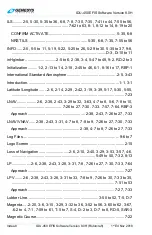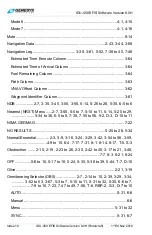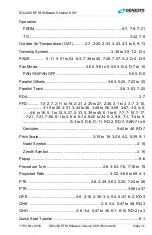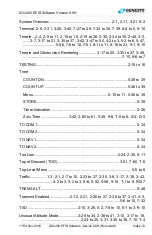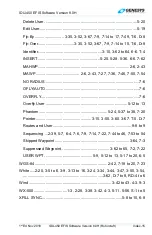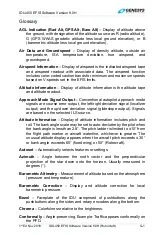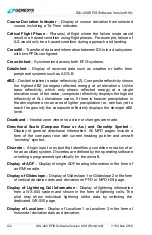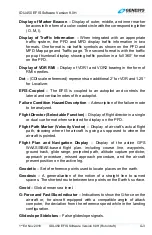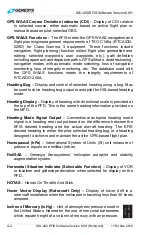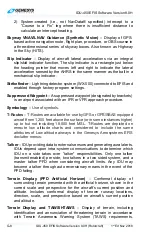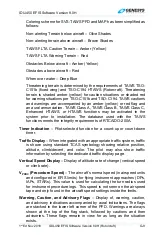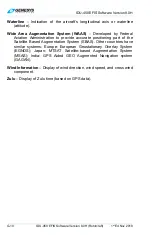
IDU-450 EFIS Software Version 8.0H
1
st
Ed Nov 2018 IDU-450 EFIS Software Version 8.0H (Rotorcraft)
G-7
VNAV altitudes, “offset” refers to the distance before or after the
waypoint the VNAV altitude must be reached.
Ownship
– Principal eye-point; referring to icon of aircraft represented on
display.
Pitch Limit Indicator
– Appears when the aircraft is within 10 knots of stall
speed, based on the VSI setting in the EFIS limits. The intent is to notify
the pilot of a possible stall condition so corrective action is taken before
the stall occurs. This function may be deselected by a setting in the
IDU configuration (limits) file.
Q
-
Routes
–
Published
RNAV routes, including Q-Routes
and T-Routes,
can be flight planned for use by the Genesys EFIS, subject to any
limitations or requirements noted on enroute charts, in applicable
advisory circulars, or by NOTAM. RNAV routes are depicted in blue on
aeronautical charts and are identified by the letter “Q” or “T” followed
by the airway number, e.g., Q35, T-205. Published RNAV routes are
RNAV-2 except when specifically charted as RNAV-1.
QFE
– Barometric setting that results in the altimeter displaying height
above a reference elevation (e.g., airport or runway threshold).
QNE
– Standard barometric setting (29.92 inHg or 1013 mbar) used to
display pressure attitude for flight above the transition attitude.
QNH
– Barometric setting that results in the altimeter displaying altitude
above mean sea level at the reporting station.
Recency
– State of occurrence, appearance, or origin.
Selection and Display of Selected Course
– Omni-Bearing Select (OBS)
function for the pilot to select the course for navigation. Selected course
is displayed for reference.
Settable V-Speeds, Targets
– The pilot may set certain V-speeds for
reference during flight. In addition, the pilot may set certain information
at any time for reference during flight, including target airspeed (with
corresponding bug) and target altitude (with corresponding bug).
Side in Command
– Side of aircraft control responsible for its operation.
Skipped Waypoint
– A skipped waypoint is a waypoint associated with a
dynamic termination leg with a zero length. These are either:
1) An altitude termination leg when current aircraft altitude is above
the termination altitude; or

